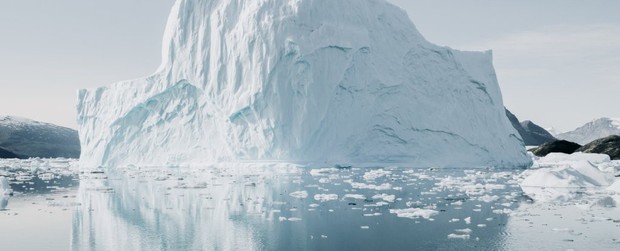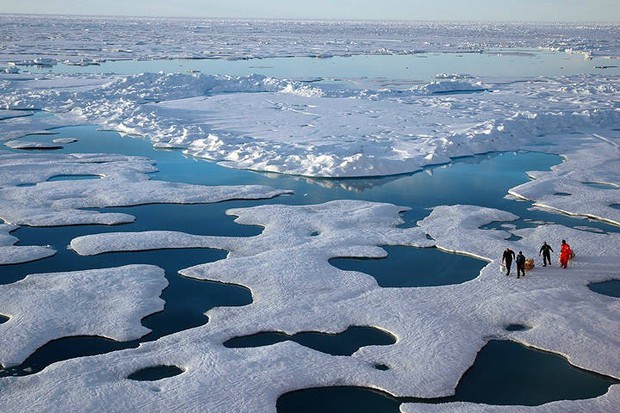The ice is on Earth, 99% is located at 2 poles, 1% is located deep inland. And any part that melts, humanity will suffer terrible consequences.
99% of the fresh water that exists in the form of ice is present in Greenland (Arctic) and Antarctica.
Each year the ice gradually melted, sinking into the oceans. Usually it takes them hundreds or thousands of years to melt. But what if you wake up tomorrow and all the ice on Earth is gone?
Dizzying sea level rise, a real disaster has occurred
In short, with the melting of all the ice at the poles, the sea level will rise by at least 66 m. Coastal cities like New York, Shanghai, London … immediately suffered the consequences of flooding everywhere. It is estimated that 40% of the world’s population will lose their homes – that’s over 3 billion people.
But that’s just the tip of the iceberg. Rising sea levels that flow inland will seep into groundwater, salinizing areas that already contain fresh water. You know, what today is responsible for providing drinking water and irrigation for mankind mainly depends on groundwater. When this system is broken, things will surely go wrong.
The ice of Greenland and Antarctica is composed of fresh water. Each year the fusion process creates a constant supply of water for the surrounding humanity. But if the mass melts, it also means that 69% of the Earth’s freshwater supply flows directly to the sea. This process not only reduces the amount of freshwater mankind has, but also alters the ocean currents and climate.
Take the Gulf Stream. It is the ocean currents of the Atlantic that constantly bring warm air to Northern Europe, and it depends on the density and salinity of arctic seawater to function. When massive freshwater overflows will thin the sea water and harm the activity of these ocean currents.
Without hot air, northern temperatures will drop, creating a mini ice age.
Ice doesn’t only exist at the poles
The remaining 1% of freshwater ice is found in continental glaciers. What if they melt together?
First to mention the glaciers of the Himalayas. This is really a danger, as the amount of ice here is still stored but extremely toxic chemicals like dichlorodiphenyltrichloroethane (DDT). Science has proven that glaciers can store such chemicals for decades, and if they melt, they all go into rivers, lakes, groundwater …
Other ice exists underground, mainly in the arctic tundra in the form of permafrost. The problem with permafrost is that it can hold mercury inside – arctic permafrost, for example, contains almost 60 million liters of mercury – almost as much as the amount of mercury that exists on Earth today. now.
Permafrost also contains organic matter, which will become a place of growth for microorganisms. Microorganisms that eat organic matter produce greenhouse gases such as CO2 and methane, which in turn accelerate global warming. It is estimated that the amount of greenhouse gases will double from today.
And when that happens, the Northern European Mini Ice Age above will be gone, as will rivers and lakes around the world. Everything will evaporate as the temperature rises so quickly, leaving many areas arid. Storms, floods, tornadoes will all be faster and stronger.
It never happened, but it was a great wake-up call
Earth will witness a massive exodus to the polar regions – Canada, Alaska, the Arctic and some remnants of Antarctica.
The above story probably never happens, as the amount of ice on Earth is thick enough to prevent it from immediately melting. However, it is true that the ice at the poles melts very quickly. In just a few days of summer, billions of tons of ice at the poles disappeared – all because of the effects of global warming and climate change.
If there is no action, at some point all human endeavors will officially no longer be valid.
Science Alert, Business Insider






